
How to Use SIM800L: Examples, Pinouts, and Specs
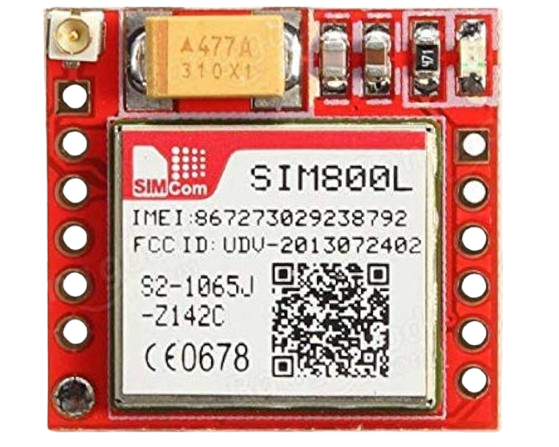
 Design with SIM800L in Cirkit Designer
Design with SIM800L in Cirkit DesignerIntroduction
The SIM800L is a compact GSM/GPRS module that enables communication over cellular networks. It supports functionalities such as sending and receiving SMS, making voice calls, and transmitting data over GPRS. Its small size and low power consumption make it ideal for embedded systems and IoT applications.
Explore Projects Built with SIM800L
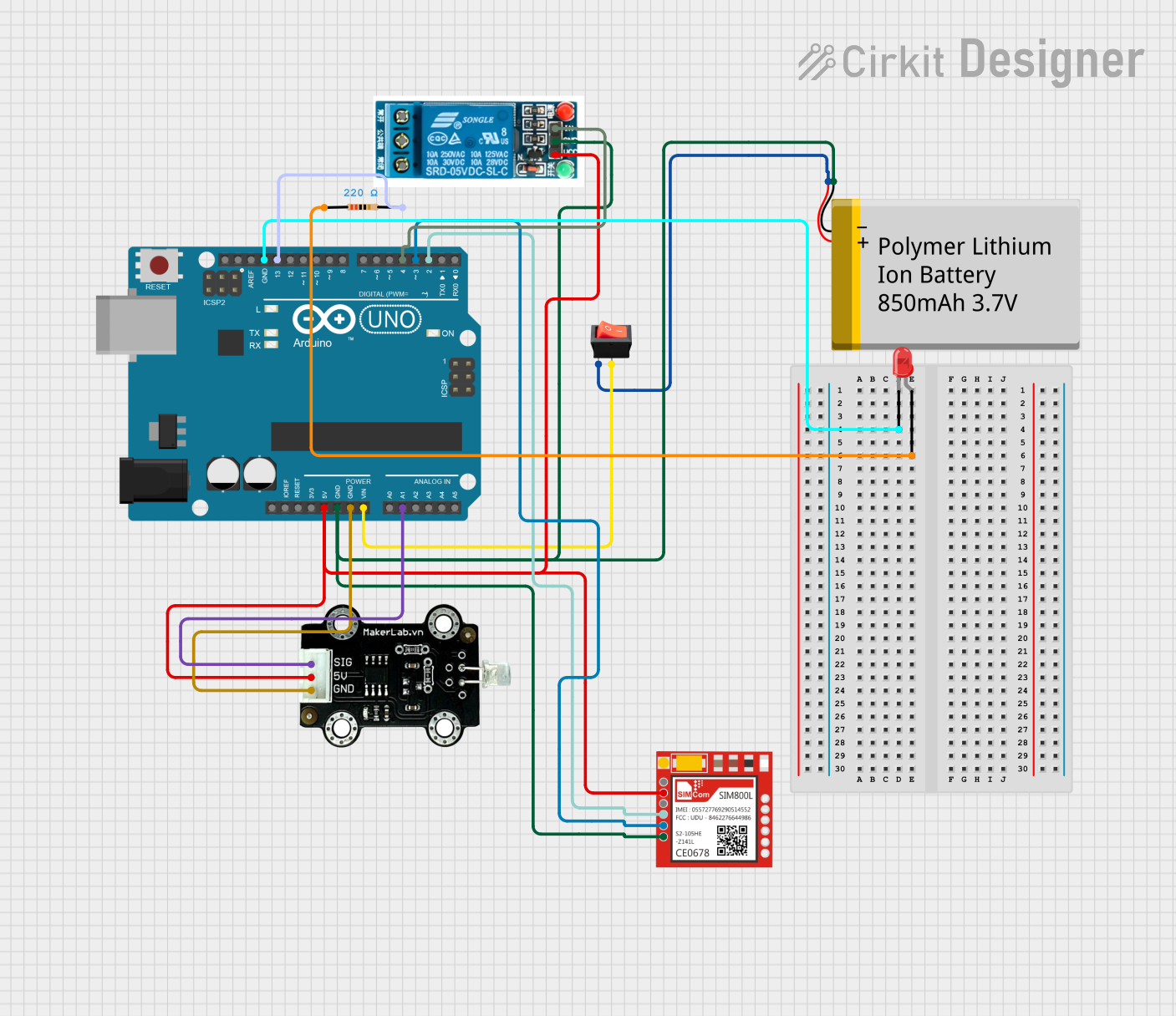
 Open Project in Cirkit Designer
Open Project in Cirkit Designer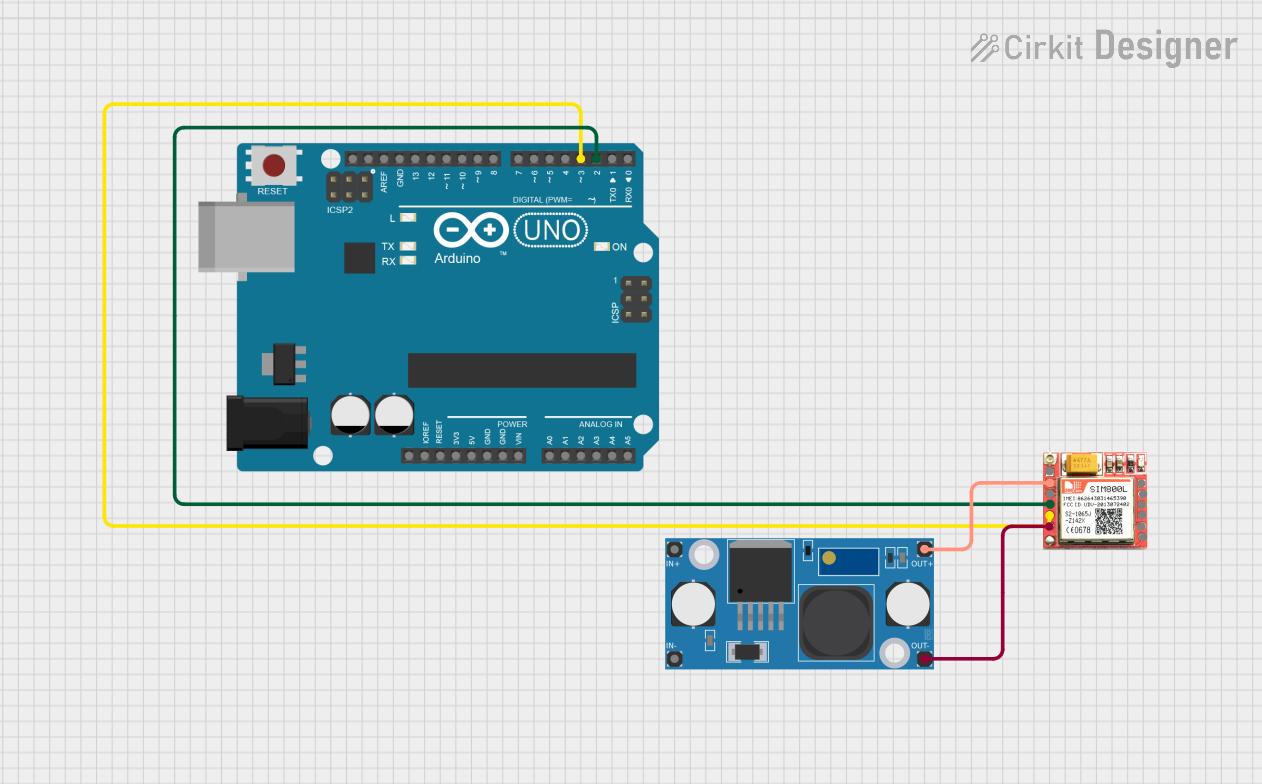
 Open Project in Cirkit Designer
Open Project in Cirkit Designer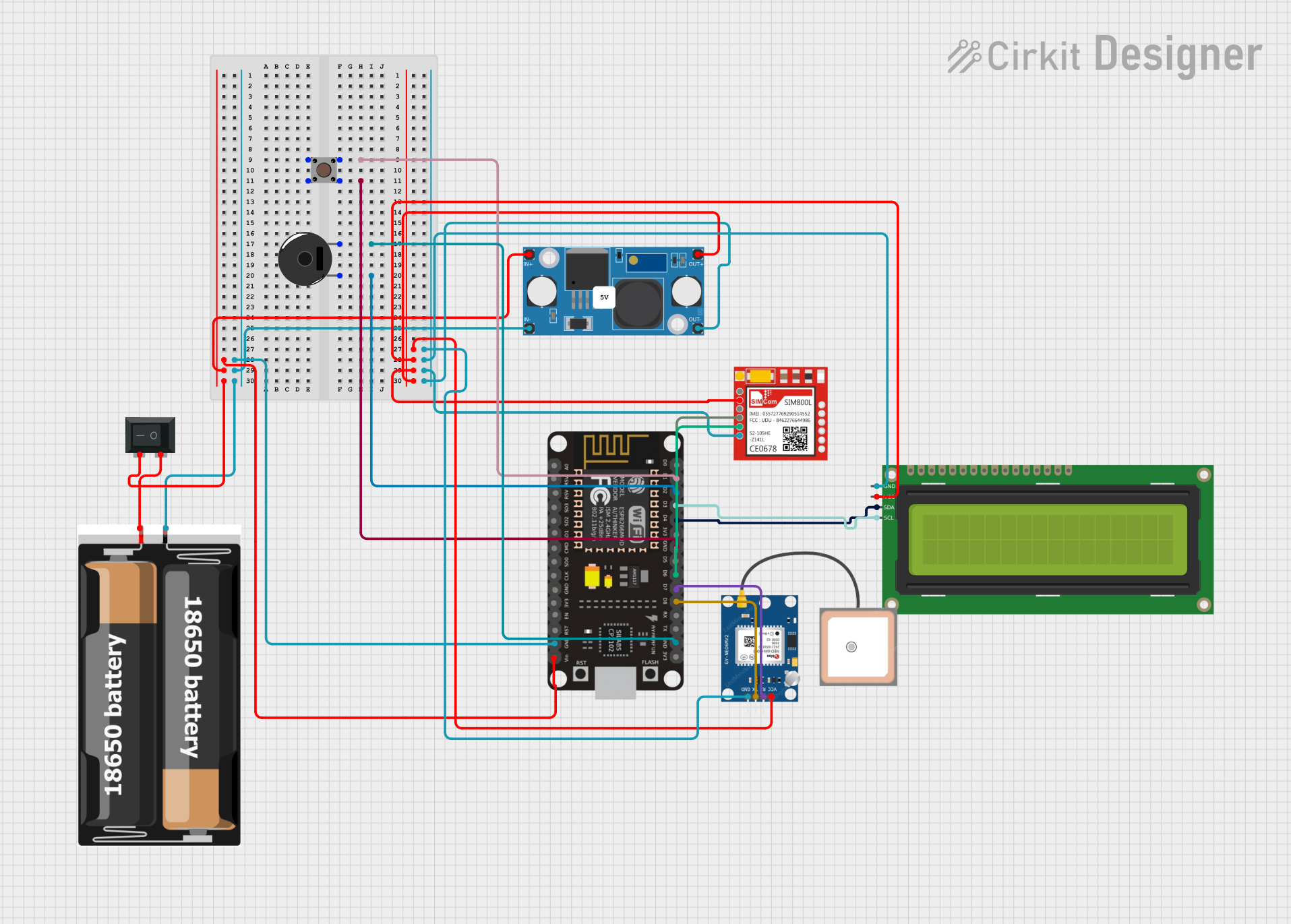
 Open Project in Cirkit Designer
Open Project in Cirkit Designer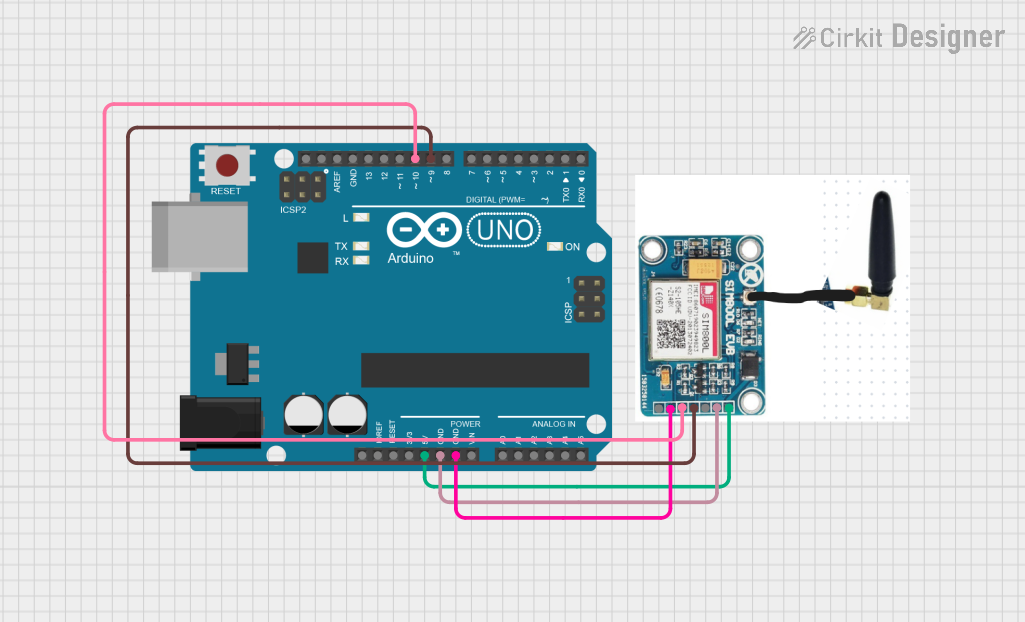
 Open Project in Cirkit Designer
Open Project in Cirkit DesignerExplore Projects Built with SIM800L

 Open Project in Cirkit Designer
Open Project in Cirkit Designer
 Open Project in Cirkit Designer
Open Project in Cirkit Designer
 Open Project in Cirkit Designer
Open Project in Cirkit Designer
 Open Project in Cirkit Designer
Open Project in Cirkit DesignerCommon Applications and Use Cases
- Remote monitoring and control systems
- IoT devices requiring cellular connectivity
- GPS tracking systems
- Home automation projects
- SMS-based alert systems
- Voice communication in embedded systems
Technical Specifications
The SIM800L module is designed to operate efficiently in a variety of environments. Below are its key technical details:
Key Technical Details
| Parameter | Value |
|---|---|
| Operating Voltage | 3.4V to 4.4V |
| Recommended Voltage | 4.0V |
| Operating Current | 20mA (idle), up to 2A (peak) |
| Frequency Bands | GSM 850/900/1800/1900 MHz |
| Communication Protocols | GSM, GPRS (Class 12) |
| Data Transmission Speed | Up to 85.6 kbps (GPRS) |
| SIM Card Support | Micro SIM |
| Dimensions | 25mm x 23mm x 3mm |
| Operating Temperature | -40°C to +85°C |
Pin Configuration and Descriptions
The SIM800L module typically has 12 pins. Below is the pinout and description:
| Pin Number | Pin Name | Description |
|---|---|---|
| 1 | NET | Network status indicator (blinks to indicate GSM status) |
| 2 | VCC | Power supply input (3.4V to 4.4V, recommended 4.0V) |
| 3 | GND | Ground connection |
| 4 | RXD | UART Receive pin (connect to TX of microcontroller) |
| 5 | TXD | UART Transmit pin (connect to RX of microcontroller) |
| 6 | RST | Reset pin (active low, used to reset the module) |
| 7 | DTR | Data Terminal Ready (used for sleep mode control) |
| 8 | MIC+ | Microphone positive input |
| 9 | MIC- | Microphone negative input |
| 10 | SPK+ | Speaker positive output |
| 11 | SPK- | Speaker negative output |
| 12 | ANT | Antenna connection (external antenna required for GSM signal reception) |
Usage Instructions
The SIM800L module can be integrated into a circuit to enable GSM/GPRS communication. Below are the steps and considerations for using the module:
How to Use the SIM800L in a Circuit
Power Supply:
- Use a stable power supply capable of providing 4.0V and at least 2A peak current.
- Avoid powering the module directly from a 5V source, as it may damage the module.
- Add a capacitor (e.g., 1000µF) near the VCC and GND pins to handle voltage drops during high current usage.
Antenna Connection:
- Connect an external GSM antenna to the ANT pin for proper signal reception.
- Ensure the antenna is placed away from noise sources to avoid interference.
UART Communication:
- Connect the RXD pin of the SIM800L to the TX pin of the microcontroller.
- Connect the TXD pin of the SIM800L to the RX pin of the microcontroller.
- Use a logic level shifter if the microcontroller operates at 5V logic levels.
SIM Card:
- Insert a micro SIM card into the SIM card slot.
- Ensure the SIM card is activated and has sufficient balance for SMS, calls, or data usage.
Reset and Sleep Mode:
- Use the RST pin to reset the module if needed.
- Use the DTR pin to enable sleep mode for power saving.
Example: Connecting SIM800L to Arduino UNO
Below is an example of how to send an SMS using the SIM800L module and Arduino UNO:
Circuit Connections
- SIM800L VCC → External 4.0V power supply
- SIM800L GND → Arduino GND
- SIM800L RXD → Arduino TX (Pin 1)
- SIM800L TXD → Arduino RX (Pin 0)
- SIM800L ANT → External GSM antenna
Arduino Code
#include <SoftwareSerial.h>
// Define RX and TX pins for SoftwareSerial
SoftwareSerial SIM800L(10, 11); // RX = Pin 10, TX = Pin 11
void setup() {
// Initialize serial communication with the SIM800L module
SIM800L.begin(9600);
Serial.begin(9600); // For debugging via Serial Monitor
// Wait for the module to initialize
delay(1000);
Serial.println("Initializing SIM800L...");
// Send an SMS
sendSMS("+1234567890", "Hello from SIM800L!");
}
void loop() {
// Nothing to do in the loop
}
void sendSMS(String phoneNumber, String message) {
SIM800L.println("AT"); // Check communication with the module
delay(1000);
SIM800L.println("AT+CMGF=1"); // Set SMS mode to text
delay(1000);
SIM800L.print("AT+CMGS=\"");
SIM800L.print(phoneNumber); // Set recipient phone number
SIM800L.println("\"");
delay(1000);
SIM800L.print(message); // Send the SMS message
delay(1000);
SIM800L.write(26); // Send Ctrl+Z to indicate end of message
delay(5000);
Serial.println("SMS sent!");
}
Important Considerations and Best Practices
- Ensure the power supply is stable and capable of handling the module's peak current requirements.
- Use proper decoupling capacitors to prevent voltage drops.
- Place the antenna in a location with good GSM signal strength.
- Avoid using the module in noisy environments to prevent communication issues.
Troubleshooting and FAQs
Common Issues and Solutions
Module Not Powering On:
- Ensure the power supply provides 4.0V and at least 2A peak current.
- Check the connections to the VCC and GND pins.
No GSM Signal:
- Verify the antenna is properly connected to the ANT pin.
- Check the SIM card for activation and sufficient balance.
- Place the module in an area with good GSM signal strength.
Unable to Send SMS or Make Calls:
- Ensure the SIM card is inserted correctly.
- Verify the phone number format (e.g., include the country code).
- Check the UART connections between the module and microcontroller.
Communication Issues with Microcontroller:
- Ensure the RXD and TXD pins are connected correctly.
- Use a logic level shifter if the microcontroller operates at 5V logic levels.
FAQs
Q: Can the SIM800L module be powered directly from a 5V source?
A: No, the module requires a voltage between 3.4V and 4.4V. Use a voltage regulator or a dedicated power supply.
Q: How do I check if the module is connected to the GSM network?
A: Send the AT+CREG? command. A response of +CREG: 0,1 indicates the module is registered on the network.
Q: Can the SIM800L module be used for internet access?
A: Yes, the module supports GPRS for data transmission. You can use AT commands to configure and establish a GPRS connection.
Q: What type of SIM card does the SIM800L support?
A: The module supports micro SIM cards. Ensure the SIM card is compatible with GSM networks.